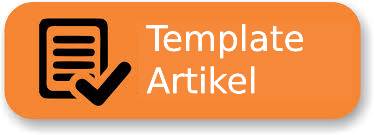Pemberdayaan Peternak Ayam untuk Pencegahan Penyakit Ayam dan Penyebaran Avian Influenza Melalui Pengabdian Kepada Masyarakat di Desa Oematnunu dan Oenaek
Abstract
Broiler farming business is the main source of livelihood in Oematnunu and Oenaek villages.
Although it provides economic benefits for the community, chicken farms also have a negative impact
on the environment and the health of the surrounding community if the management does not comply
with sanitation standards. Zoonotic diseases that can be transmitted by animals become a risk if
environmental sanitation is not maintained. In addition, chicken farms are also a source of
environmental pollution, including soil, water, air, and affect the incidence of diseases related to
behavior and the environment. The aim of this activity is to prevent the spread of zoonotic diseases
through proper management, maintenance, storage and processing of chicken livestock waste. In
addition to production efficiency, this activity also aims to ensure environmentally sound chicken farms. The methods used are surveys, discussions with village officials and the community, as well as
empowerment through training in preventing zoonotic disease transmission by implementing PHBS.
Chicken farmers are also trained in the use of personal protective equipment, modification of cages
according to health standards, livestock waste management, and financial management. The output of
this activity is improving the health status of the community, especially partner chicken farmers, by
implementing zoonotic disease prevention behaviors. Communities will also gain knowledge to prevent
disease transmission through clean and healthy living behaviors. There has been a change in people's
behavior in using personal protective equipment and modifying healthy chicken coops. In addition, the
production of chicken farms will also increase both in terms of quality and quantity. Community social
control over cage sanitation will be important, and local governments are expected to collaborate in
establishing special areas for chicken farms outside residential areas.
References
Badan Pusat Statistik Kabupaten Kupang, 2022. (2022). Kabupaten Kupang Dalam Angka 2022. Kabupaten Kupang Dalam Angka. https://doi.org/1102001.5303
Bella, dr. A. (2022). No Title. 12 Juli 2022. https://www.alodokter.com/pentingnyamenerapkan-phbs-perilaku-hidup-bersih-dansehat-dalam-kehidupan-sehari-hari
BRIN. (2022). No Title. Badan Rizet Dan Inovasi Nasional. https://www.brin.go.id/news/109948/mengena l-zoonosis-riset-dan-pencegahannya
Defari, E. K., , D., Senoaji, G., & Hidayat, F. (2017). Pemanfaatan Limbah Kotoran Ayam Sebagai Bahan Baku Pembuatan Kompos. Dharma Raflesia : Jurnal Ilmiah Pengembangan Dan Penerapan IPTEKS, 12(1), 11–20. https://doi.org/10.33369/dr.v12i1.3383
Fauziah. (2009). UPAYA PENGELOLAAN LINGKUNGAN USAHA PETERNAKAN AYAM. Https://Uwityangyoyo.Wordpress.Com/2009/0 4/13/Upaya-Pengelolaan-Lingkungan-UsahaPeternakan-Ayam/. https://uwityangyoyo.wordpress.com/2009/04/ 13/upaya-pengelolaan-lingkungan-usahapeternakan-ayam/
Grzinic, G., Piotrowicz-Cieślak, A., KlimkowiczPawlas, A., Górny, R. L., Ławniczek-Wałczyk, A., Piechowicz, L., Olkowska, E., Potrykus, M., Tankiewicz, M., Krupka, M., Siebielec, G., & Wolska, L. (2023). Intensive poultry farming: A review of the impact on the environment and human health. Science of the Total Environment, 858(October 2022). https://doi.org/10.1016/j.scitotenv.2022.16001 4
Kemenkes RI. (2020). Penggunaan Alat Pelindungan Wabah COVID-19. Penggunaan Alat Pelindungan Wabah COVID-19, April, 1–27.
Kementerian Kesehatan RI. (2018). Berita Negara. Peraturan Menteri Kesehatan Republik Indonesia Nomor 4 Tahun 2018, 151(2), 10– 17.
Masdiana C. Padaga, et al. 2018. (2018). Penyakit Zoonosa Strategis di Indonesia: Aspek Kesehatan Masyarakat Veteriner (U. Press (Ed.); I desember).
Profil Kesehatan Kabupaten Kupang. (2020).
WHO. (2018). Influenza (avian and other zoonotic). Https://Www.Who.Int/NewsRoom/Fact-Sheets/Detail/... https://www.who.int/news-room/factsheets/detail/influenza-(avian-and-otherzoonotic)
Widiasih, D. A., & Budiharta, S. (2012). Epidemiologi Zoonosis Di Indonesia, Yogyakarta : UGM Press. August, 552. http://perpustakaan.litbang.depkes.go.id/ucs/ index.php?p=show_detail&id=10490
Xiao, S., Zhang, H., Zhu, R., Liao, X., Wu, Y., Mi, J., & Wang, Y. (2021). Ammonia reduction by the gdhA and glnA genes from bacteria in laying hens. Ecotoxicology and Environmental Safety, 222(July), 112486. https://doi.org/10.1016/j.ecoenv.2021.11248 6








